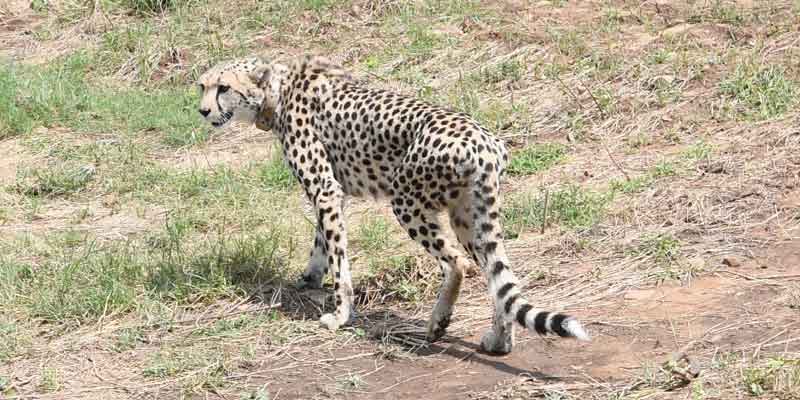- India
- Jan 04
Namibian cheetah delivers three cubs in Kuno National Park
• A Namibian cheetah has given birth to three cubs at the Kuno National Park (KNP) in Madhya Pradesh’s Sheopur district.
• The cubs have been born to a cheetah named Aasha.
• With the birth of three cubs, the total number of cheetahs in the KNP has grown to 18.
• In March 2023, Siyaya (later renamed as Jwala) had given birth to four cubs, but only one of them survived. Jwala was also translocated to the KNP from Namibia.
• Since March 2023, six adult cheetahs have died in the KNP due to various reasons.
Cheetah Reintroduction Programme
• The ‘African Cheetah Introduction Project in India’ was first conceived in 2009. In 2013, the Supreme Court turned down the plea for relocation of African cheetah at Kuno National Park in Madhya Pradesh.
• In January 2020, the Supreme Court allowed the government to introduce the African cheetah to a suitable habitat on an experimental basis to see whether it can adapt to Indian conditions.
• In September 2022, eight cheetahs airlifted from Namibia — five females and three males — were released in Madhya Pradesh’s Kuno National Park (KNP), putting the sanctuary in Sheopur district firmly on the world map.
• It is said to be the world’s first inter-continental large wild carnivore translocation project.
• In a second such translocation, 12 cheetahs were flown in from South Africa and released into Kuno on February 18.
Significance of cheetah reintroduction
• Cheetah (Acinonyx jubatus), the world’s fastest land animal, got completely wiped out from India due to their use for coursing, sport hunting, overhunting and habitat loss.
• Cheetahs don’t need much water and can survive in dry forests, grasslands, open plains and desert regions.
• The last cheetah died in the country in 1947 in Korea district in present-day Chhattisgarh and the animal was officially declared extinct in 1952.
• Cheetah is considered vulnerable under the International Union for Conservation of Nature’s (IUCN) red list of threatened species, with a declining population of less than 7,000 found primarily in African savannas.
• The main goal of cheetah reintroduction project in India is to establish viable cheetah metapopulation in India that allows the cheetah to perform its functional role as a top predator and provides space for the expansion of the cheetah within its historical range thereby contributing to its global conservation efforts.
Kuno National Park
• Kuno National Park was established in Madhya Pradesh in 1981. It was also known as Kuno-Palpur and Palpur-Kuno Wildlife Sanctuary.
• Spread over 748 sq km, KNP has an adequate prey base. It is devoid of human settlements, forms a part of the Sheopur-Shivpuri deciduous open forest landscape. The carrying capacity can be further enhanced by including the remaining part of the Kuno Wildlife Division (1,280 sq km) through prey restoration.
• KNP is situated on the northern side of Vidhyachal mountains and draws its name from a tributary of the Chambal river, Kuno.
• The action plan for cheetah translocations in KNP has been developed in compliance with International Union for Conservation of Nature (IUCN) guidelines and considering site assessment and prey density, current cheetah carrying capacity of the national park, among other criteria.
• Financial and administrative support to the cheetah reintroduction programme in India would be provided by the ministry through the National Tiger Conservation Authority (NTCA).
Manorama Yearbook app is now available on Google Play Store and iOS App Store


